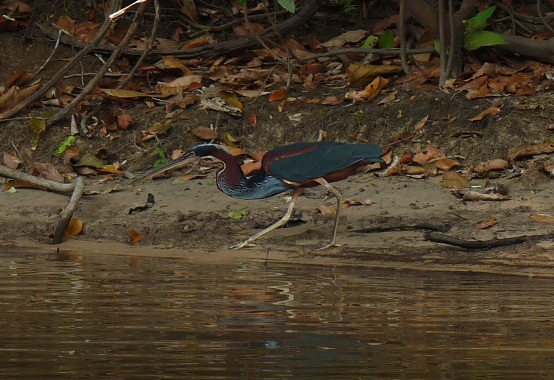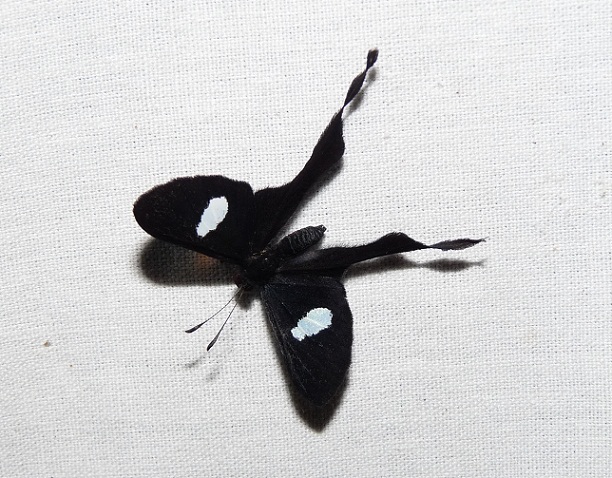January - SIBERIAN ACCENTOR (Denmark); a leftover from 2016's amazing and unprecented influx, I made a special twitch for this very special vagrant.
February - Red-breasted Goose (Bulgaria); they kept us in suspense for three days but we finally got to see around 10% of the estimated world population!
March - Grey-headed Woodpecker (Brussels); a lone male singing in the Forêt de Soignes/Zoniënwoud and my first in Belgium.
April - Yellow-browed Warbler (Brussels); an intra-Brussels twitch to this lovely little bird with the long name was the best medicine to get over a cold.
May - Spotted Flycatcher (Kalmthout Heath and Brussels); there seemed to be above-average numbers of this rather cryptic species this spring and it was also a new addition to my patch list.
June - Black Stork (Ardennes); 3 flew overhead (only the second time I've seen this species in Belgium) whilst I was waiting in vain for my first ever Greenish Warbler to show.
July - Green Woodpecker (Switzerland, Brussels and Couvin); seen several times this month, one of my biggest surprises of the year was looking out of my window to discover a juvenile in the dead tree opposite.
August - Ornate Hawk-Eagle (Cristalino Jungle Lodge); more than just a surprise, I was lucky enough to witness something utterly unbelievable within ten days of arriving in the Amazon.
September - RUFOUS-TAILED ATTILA (Cristalino Jungle Lodge); Rich Hoyer seems to find one of these every year so it was extra special to discover my own one feeding in the open along the river.
October - LONG-TAILED SHRIKE (Zwin); a first-autumn bird which turned up while I was away in Germany thankfully stayed just one more day, thus allowing me to twitch it before it disappeared.
November - Desert Wheatear (Holland); a dapper first-winter male and my first in Europe at the end of a rather unsuccessful day's twitching.
December - Hawfinch (Brussels); despite the huge influx of this species into north-western Europe, I never expected to be watching one from my living room, making it the 55th species on my balcony list.
Strangely, I saw or heard 167 species in Belgium year for the second year running. Birding trips to Denmark, Bulgaria, The Netherlands, the Alps and the French Riviera took my European year list to 234, whilst I added another 378 in Brazil, making a total year list of 612 species. Of these, just eight were lifers, namely Siberian Accentor, heard-only Greenish Warbler, Straight-billed Hermit, Rufous-thighed Kite, Rufous Attila, Rufous-tailed Xenops, Cinereous Tinamou and Long-tailed Shrike.
My bird of the year has got to be Siberian Accentor (above) way back at the end of January. At the time, everyone was wondering whether 2017 would see any of these birds returning but there have been no reports since so this may well have been my one and only opportunity to connect with this species in Europe. A few more of my pictures of this bird can be seen in the linked post so, instead, I will round off with the million-dollar shot taken by one of my guests at Cristalino this year. Sunbittern is always a favourite amongst our visitors yet getting a shot of the distinctive sunburst pattern in the wings takes a lot of patience and luck. The same lucky group who had the Ornate Hawk-Eagle encounter on their way out of the lodge had a very succesful three days with me, seeing both their most wanted species, namely Zigzag Heron and Harpy Eagle. One morning, however, we were boating upriver when we encountered a Sunbittern on the rocks together with a pair of Muscovy Ducks. We slowed down for the obligatory Sunbittern shots as, even with its wings closed, it is still a very attractive bird, when the unthinkable happened as one of the Muscovy Ducks took a step too close and the Sunbittern reacted by flaring out its wings. My guests, of course, were ready and got this amazing shot to make any professional photographer green with envy.
 |
| Sunbittern by David Lang |




















































